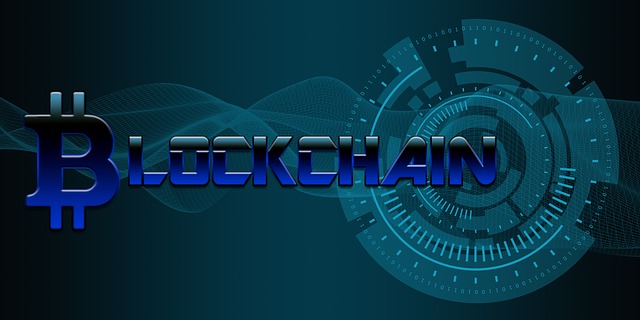Blockchain technology explained in plain English
Blockchain Cryptocurrency Technology: Explained in Plain English
In today’s rapidly evolving digital world, the term “Blockchain Cryptocurrency Technology” has become ubiquitous. It is often associated with Bitcoin and other digital currencies, but its applications go far beyond cryptocurrency alone. This article explores blockchain technology in simple terms, unraveling its core mechanics, highlighting its relevance, and shedding light on its far-reaching impact across various industries.
Understanding Traditional Transactions
Before we can appreciate what blockchain offers, it helps to understand how traditional digital transactions work. In conventional systems, financial transactions typically require a central authority such as a bank or payment processor. If you send money to someone, your bank verifies the details and records the transaction in its private ledger.
This system works, but it has several vulnerabilities. The main issues are:
- Centralized Control: A single point of control means a single point of failure.
- Risk of Tampering: Data can be modified, lost, or hacked.
- Lack of Transparency: Users can’t verify transactions without relying on the central authority.
These limitations created the need for a better solution – and blockchain emerged as a revolutionary alternative.

What Is Blockchain Cryptocurrency Technology?
At its core, blockchain is a decentralized digital ledger. It records transactions across a distributed network of computers, ensuring the information is secure, transparent, and immutable (cannot be changed).
Let’s break it down:
- Block: A container of data or digital information.
- Chain: A public digital ledger that links these blocks using cryptographic hashes.
Each block includes:
- Transaction details (e.g., sender, receiver, amount)
- Timestamp of when the transaction occurred
- A unique hash that links it to the previous block
Because of the way hashes and blocks are linked, changing any one block would require altering every subsequent block—a nearly impossible task.
How Does Blockchain Work?
Here is a simplified step-by-step breakdown of how blockchain works:
- Transaction Initiation: A user initiates a transaction, such as sending cryptocurrency.
- Network Broadcast: The transaction is shared with a peer-to-peer network of nodes (computers).
- Verification Process: Nodes use algorithms to validate the transaction’s authenticity.
- Block Formation: Once validated, the transaction is grouped with others into a new block.
- Hash Creation: The new block receives a cryptographic hash and is linked to the previous block.
- Chain Update: The block is added to the blockchain, becoming a permanent part of the ledger.
This process is known as a consensus mechanism and can take different forms (e.g., Proof of Work, Proof of Stake).
The Role of Cryptography in Blockchain
One of the defining features of blockchain is its use of cryptographic algorithms. These include:
- Hashing: Each block is identified by a unique digital signature (hash). Changing any data changes the hash.
- Digital Signatures: Verify that transactions are authentic and have not been tampered with.
- Public and Private Keys: Allow users to send and receive funds securely.
This combination of cryptographic security and decentralized validation makes blockchain incredibly difficult to hack.

Blockchain vs. Traditional Spreadsheets
To understand blockchain better, imagine a Google Sheet that is shared across millions of users:
- Everyone has access to it and can see all entries.
- No one can alter data without consensus from the entire network.
- Every new entry is automatically locked in place and becomes a permanent part of the document.
Unlike Excel or Sheets where data can be edited, blockchain ensures immutability – meaning once data is entered and validated, it cannot be altered.
Real-World Applications Beyond Cryptocurrency
Although often linked with digital currencies like Bitcoin or Ethereum, blockchain has many other uses:
1. Supply Chain Management
Blockchain helps track goods in real-time, offering transparency and reducing fraud.
2. Healthcare
Patient records stored on a blockchain are secure and accessible only to authorized personnel.
3. Voting Systems
Blockchain can provide a tamper-proof system for digital voting, ensuring transparency and reducing fraud.
4. Legal Industry
Smart contracts on blockchain automate agreements, reducing the need for intermediaries.
5. Finance and Banking
Blockchain enables faster and cheaper cross-border payments by eliminating the middleman.
Security Benefits of Blockchain
One of the biggest strengths of blockchain cryptocurrency technology is security. Here’s how it keeps data safe:
- Decentralization: No single point of control means less vulnerability.
- Immutability: Once recorded, transactions cannot be changed.
- Transparency: Anyone can view the blockchain, which builds trust.
- Consensus Protocols: Ensure that only valid transactions are added to the chain.
To successfully hack a blockchain, one would need to control over 51% of the network’s computing power—an almost impossible task in large networks.
The Rise of Blockchain Cryptocurrency
The term “blockchain cryptocurrency” refers to digital currencies that use blockchain to track and secure transactions. Examples include:
- Bitcoin (BTC)
- Ethereum (ETH)
- Litecoin (LTC)
- Ripple (XRP)
These cryptocurrencies use blockchain as the backbone of their systems, ensuring secure peer-to-peer transactions without the need for intermediaries.
Future of Blockchain Technology
Blockchain has already disrupted multiple sectors, but its full potential is still emerging. Future possibilities include:
- Decentralized Finance (DeFi): Financial services without traditional banks.
- Web3: A decentralized version of the internet, giving users control over their data.
- Digital Identity: Blockchain can secure and verify personal identities.
- Tokenization of Assets: Real estate, art, and other physical assets can be tokenized and traded.
FAQs: Blockchain Explained
Q: Is Blockchain the same as Bitcoin?
A: No. Blockchain is the technology that powers Bitcoin, but it can be used for many other applications.
Q: Can data on a blockchain be changed?
A: No. Once verified and added, data becomes immutable.
Q: Who controls the blockchain?
A: No one central authority. Blockchain is decentralized and controlled by its users.
Q: Is Blockchain legal?
A: Yes, in most countries. However, its use for illegal activities is being closely monitored by regulators.
Q: Can Blockchain be used for other industries?
A: Absolutely. Its applications include finance, healthcare, logistics, voting, and more.
Conclusion: The Blockchain Revolution
Blockchain cryptocurrency technology is reshaping how we view digital trust, transactions, and data security. By combining decentralization, transparency, and immutability, blockchain provides a robust framework for innovation in nearly every sector.
Whether you’re a curious beginner or a professional exploring technological shifts, understanding the principles behind blockchain helps demystify one of the most groundbreaking inventions of the 21st century. As we continue to digitize more aspects of our lives, blockchain will undoubtedly play a pivotal role in shaping our future.




